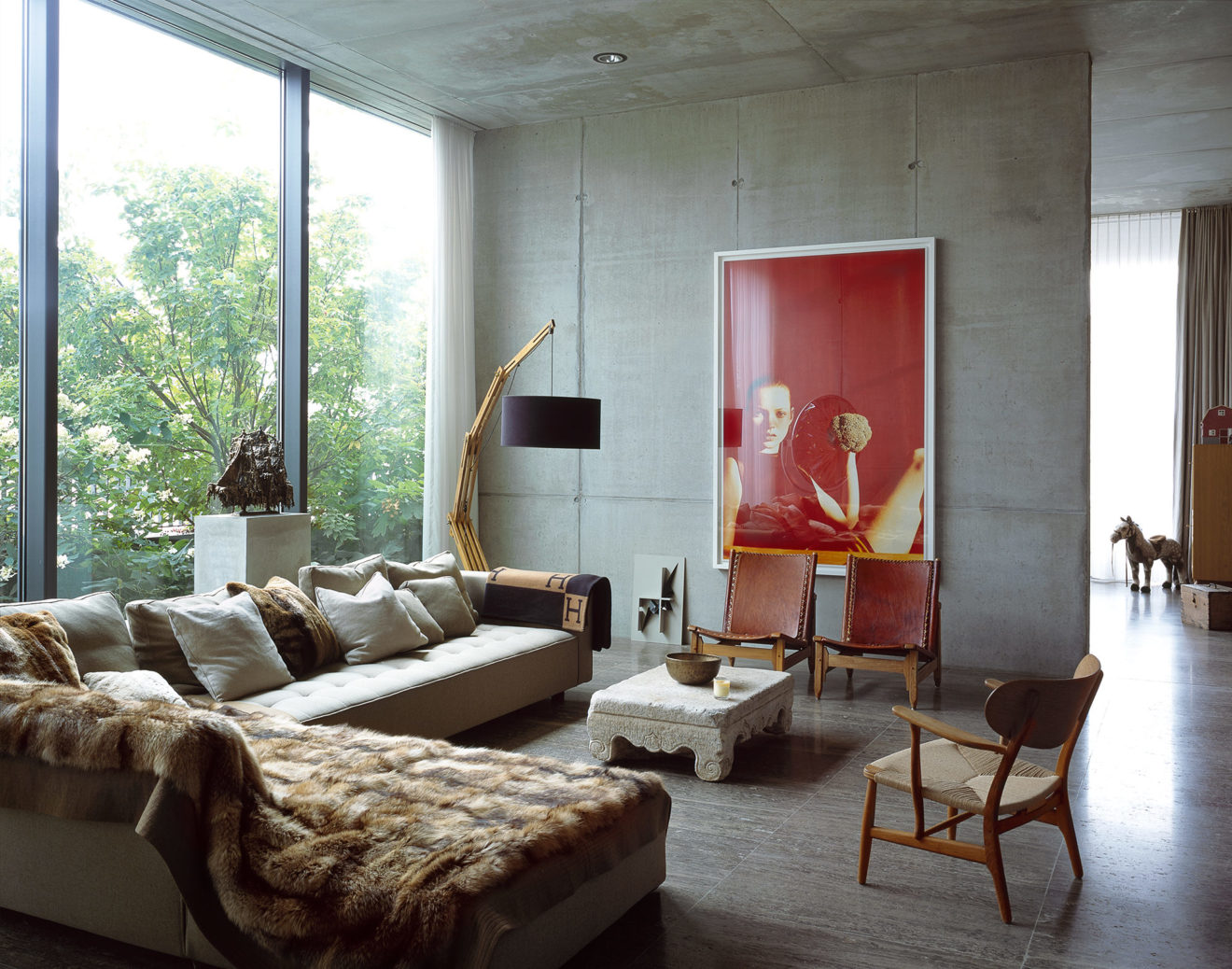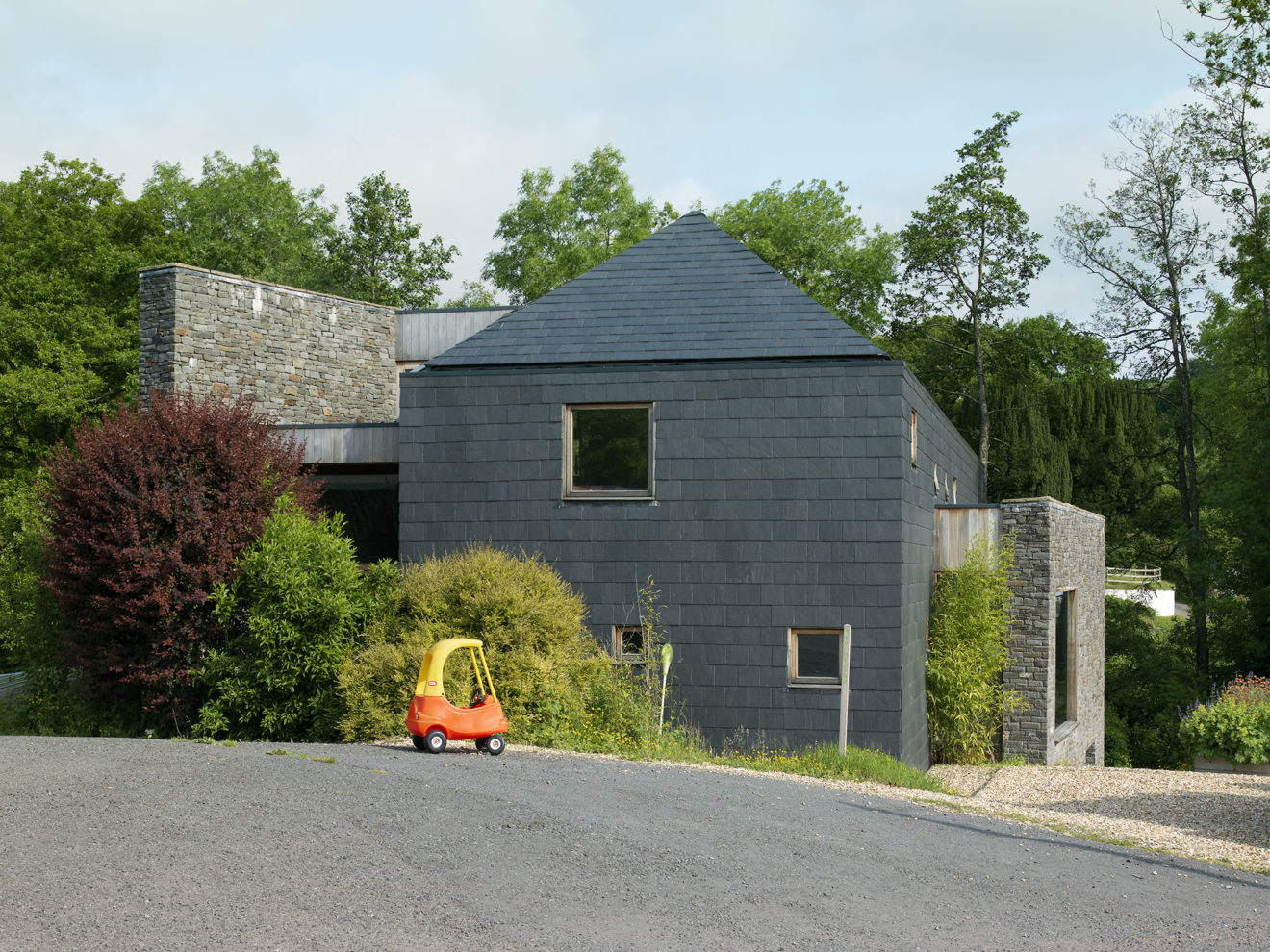Brotherton-Lock
Tim Brotherton and Katie Lock go back a long way. Since meeting in 2004, they have built a life and a career together as successful photographers, Brotheron-Lock. Their combined experience and expertise allow them to approach a broad remit with their camera, from architectural photography and interiors shoots, to styled magazine spreads and poignant personal projects. We chat to the pair about their journey to date, get a feel for their process and find out what influences them creatively.
Tim and I met at Frieze Art Fair in 2004! Tim was working as a photographer and I had just moved from Berlin to London to do a year-long artist in residency at Delfina Studios. At the beginning, we went to exhibitions and gallery openings in the East End, followed by after show parties and late nights. It was a great time of hedonism and exploring art. After completing my PhD studies, Tim and I spent some time in Berlin in 2009. There we photographed some interiors, which marked the beginning of Brotherton-Lock. One of the stories made it onto the front cover of ELLE Decoration, and off we went!
We live and work together, and pass around ideas no matter where we are, or what time of the day it is. Our creative dialogue is ongoing and we discuss our upcoming projects. We are always exploring ways to refine our photographic language. But we are both creative individuals in our own right and our inspiration can come from a wide range of sources, like exhibitions, art and books. Tim loves films and is a maker, rebuilding our bedroom and bathroom during the pandemic. I am a keen reader and use drawing and video to explore ideas.
In the actual process of photographing we both have our area of expertise that cover specific areas. We tether on jobs where Tim is behind the camera and I operate the laptop. We tweak things till we are both convinced that we found the best possible shots. Four eyes see more than two! One more benefit: Having company when travelling. We have a camper van and use it to travel to jobs outside London.
Tim has a formal photography education, whilst I studied Fine Art at Chelsea College and in Berlin. Photography is a personal journey of discovery and learning, which is constantly evolving and exploring new technologies. Photography is also learning by doing and by making mistakes (unfortunately). That applies to all areas; creative, technical, as well as business.
Re-entering academia as a lecturer last year has reaffirmed my belief that a formal photography education is incredibly useful. In order to see photography and image making within its larger contexts, it’s important to know the history of photography and where you are positioned within it as a photographer. Education is helpful in seeing the bigger picture. And, ideally, it is a space of inspiring dialogues, a nourishing exchange of ideas, and a library full of photography books.
Art provides us with references and ideas that come to mind when searching for ways to tell a story photographically. Our long-shared history of seeing exhibitions is an incredibly useful resource in this process. Tim and I might talk about a painting or photograph that we saw in a show some time ago, a scene in a film, a lighting set up or some photographic filters in a particularly beautiful way. It can also be something more abstract and tangible, like the atmosphere of an artwork that now might function as a blueprint for an image we are trying to create.
As photographers, we try to explore ways of utilising new technologies into our work, not only in the photographic process or image making but also as forms of output within the broader society, like social media platforms etc. And here art can be a guide for thinking. An artist we admire, for example, is David Hockney. During his lifelong career he has adopted and embraced technological progress, whether he uses iPads for his drawings or Polaroids, as in earlier work. And when wondering how we want to shape the world with the new technologies that are becoming available, a question like ‘What would David Hockney do?’ can be incredibly useful.
That is a long list! We love the architecture by Tadao Ando and Buckminster Fuller, the sculptor Phyllidia Barlow, and the painters Mark Bradford and Philip Guston. We love the atmosphere in Anne Imhoff’s dystopian installations and performances, which we once got to photograph at Tate Modern. A book we pull from the shelf frequently is Sanctuary by Gregory Crewdson and Sweet Earth: Experimental Utopias in America by Joel Sternfeld. Tim loves Thomas Demand’s Dailies. We bought a print edition of his recently and are now waiting for it to arrive in the post. In preparation for a recent teaching session I enjoyed revisiting The Democratic Forest by William Eggleston. One not only evolves as a photographer, but also as a person, so it can be valuable and interesting to revisit artists’ work and discover new aspects. And I still want to visit Peter Zumthor’s Spa in Switzerland.
Life is truthful and worth recording in all its facets. When we photograph interiors for designers or houses for publication, the spaces are carefully curated environments, creating atmospheres, telling stories, tickling the eye with detail and finesse. They are made to be observed and enjoyed.
Bedsit Land, in contrast, are spaces where a room contains a whole life with all that is needed in the here and now. The spaces are temporary, utilitarian and often driven by necessity. It relates to a Margarete Duras quote from her 1973 essay House and Home: “We are here. Where the story of our lives takes place. Nowhere else.” Students are in a turbulent time of coming of age. The arrangements of things and objects strewn around the room often paint a picture of the troubles and joys in a young person’s life. In a similar way, our pictures of Jaywick show the dreams and disappointments of former holiday homes that have been abandoned and fallen into decay.
We work mostly with one camera – an architectural pancake camera, a medium format digital back and large format lenses. It is a slow and considered way of working, where we work on shots till we are happy with it. We think a lot about what kind of imagery our clients need to communicate their work and ideas.
Photography is all about the light and unfortunately, in Great Britain, we have so little of it, especially in the winter with its short days. So, we dream about photographing in places with long days, drawn-out sunrises and sunsets. We loved photographing the bunker in Berlin. It was such a stunning and photogenic place.
We were a whisker away from photographing Julian Schnabel’s Villa Palazzo Chupi in New York. But then a baby was on the way and unfortunately it got cancelled. I have always been intrigued by Kurt Schwitters Merzbau and would have loved to be around at the time to photograph it. In his studio, Schwitter built an architectural life-size collage with a maize of asymmetrical grottos, shelves, nooks and crannies. He worked on the project from 1923 until 1937, when he was forced to flee Nazi Germany to Norway. The building was destroyed in an Allied bombing raid and only three black and white photographs survived.
Sometimes we get given plans by the designers or architects. But where possible, we try to do a site visit before photographing an apartment or a building. By looking around we can get a feel for it and identify potential shots. We try to see how the light is moving around the space or building. Thankfully, these days apps like Sunseeker are helpful tools to predict the suns trajectory. However, all preparation can be rendered useless by unpredictable events. Arriving to photograph a building, one finds that overnight roadworks have started, or large fences have gone up that block the view to what would have been your main shot. These events happen all the time!
We are visual people always looking and photography is telling stories. So I guess, with these eyes, we wonder through the world.













